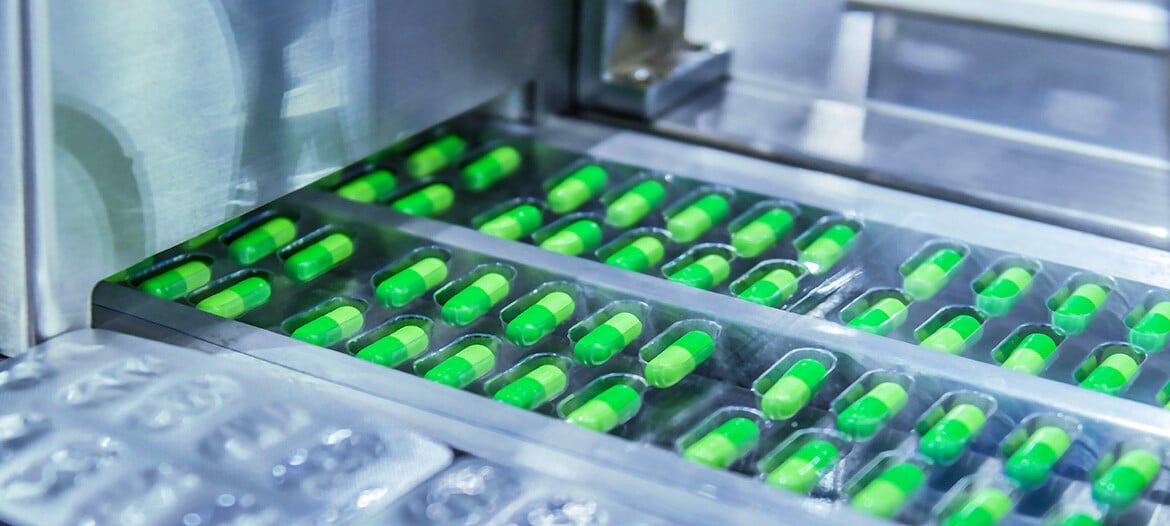Agility in Biopharma: The Case for Monitoring & Alarming

Marty Davis
Global Marketing Manager, ELPRO
In McKinsey’s recent article “Simplification for Success: Rewiring the Biopharma Operating Model,” the consultancy emphasizes the growing need for the biopharmaceutical industry to evolve its operating model to meet the challenges of an increasingly complex environment.1 From rising regulatory demands to technological disruption and intensified competition, biopharma companies are facing multiple hurdles. In response, McKinsey argues for operational simplification—streamlining processes, cutting unnecessary complexity, and focusing on the core capabilities that truly drive success.
One key component of operational simplification that McKinsey touches on is the role of digital technologies in driving efficiency and decision-making. Process automation through customized digital workflows and software-based alarming play a crucial role when monitoring product stability data. These powerful tools reduce operational complexity, enhance productivity, and improve compliance within the biopharma industry.
The Challenge: Complex Operations in Biopharma
The biopharma industry, by its nature, operates in a high-stakes environment where precision, safety, and compliance are paramount. With the constant pressure to accelerate time-to-market for new drugs, meet stringent regulatory standards, and adapt to evolving technologies, the operating model of biopharma companies has become more fragmented and complex than ever before. Internal teams must juggle a wide range of operational challenges, from supply chain management to research and development, and from clinical trials to production.
All these moving parts need constant monitoring to ensure that everything is functioning smoothly. Any disruption in a controlled, highly regulated environment, whether in a laboratory, manufacturing facility, or warehouse, can lead to serious consequences, including delays in production, costly recalls, or worse, product loss and regulatory fines. Environmental monitoring solutions provide real-time oversight of all the variables that could affect the success of a biopharma operation while reducing compliance driven-manual efforts to the minimum.
Environmental Monitoring and Operational Simplification
Environmental monitoring involves tracking key parameters like temperature, humidity, air quality, and other environmental factors that are crucial to maintaining the integrity of sensitive biopharma materials, including drugs, biological samples, and active pharmaceutical ingredients (APIs). By implementing robust environmental monitoring systems, biopharma companies can ensure that these parameters remain within the specified ranges, reducing the risk of product contamination, degradation, or loss.
Environmental monitoring does more than just ensure regulatory compliance—it is a critical tool for operational simplification.
By centralizing and automating environmental data collection, monitoring systems eliminate the need for manual checks, which are not only time-consuming but also prone to human error. The resulting operational efficiency enables staff to focus on higher-value tasks instead of constantly checking on environmental conditions. For biopharma leaders who are seeking to streamline operations and improve agility, this means fewer resources need to be devoted to routine tasks so more attention can be placed on innovation, quality, and patient outcomes.
A recent Acino Pharma case study, published by environmental monitoring solutions provider ELPRO, highlights how the companies collaborated to automate stability data assessments. The project dramatically reduced processing times for temperature deviations from an average of three days to under 15 minutes.2 The shift to streamline global collaborations, irrespective of time zones, freed up resources and simplified critical tasks through efficient digitalization and automation.
Software-Based Alarming: Smarter Assessments, Fewer Quarantines
Software-based alarming brings intelligence into the monitoring process by enabling flexible, automated assessment—without the need to pre-configure each data logger. According to Patrik Senn, head of product management at ELPRO, this approach reduces the number of products placed in quarantine and reduces considerably the effort needed for reassessments, resulting in significant cost and time savings. “With software-based alarming, a single device can monitor multiple products with different stability profiles, thus, streamlining shipment preparation and enabling assessments on product level.”
Acino Pharma dramatically reduced their average temperature deviation processing times from three days to less than 15 minutes.
In the case of Acino, ELPRO’s liberoMANAGER software and cold chain database ensures full GDP compliance while establishing a centralized solution to enhance transparency and improve data availability. “It dramatically decreased their temperature deviation assessment process time by ninety-nine percent, reducing manpower while enabling immediate notifications and faster, proactive responses,” noted Senn.
Real-Time Monitoring: Visibility and Speed in Cold Chain Logistics
Consider this scenario: A temperature-sensitive pharmaceutical batch is being transported, and an environmental monitoring system detects that the temperature has exceeded the safe range. With a warning triggered in real-time, operators can quickly adjust the environment or remove the batch, thus preventing a costly loss of product. Moreover, real-time monitoring systems often come with advanced analytics that allow biopharma companies to track trends and predict potential issues, giving them more proactive control over their operations.
Real-time monitoring improves supply chain visibility and route mapping, making it easier to follow shipments, have informed discussions, and streamline supplier qualification.
From a broader perspective, the integration of real-time monitoring devices and advanced analytics systems into an overall operational model has profound benefits for simplifying decision-making. With predictive warnings and automated assessments, biopharma teams can act faster, reducing the time spent troubleshooting or investigating issues. This improves both response time and accuracy, which are essential in meeting the industry's stringent requirements for quality and safety.
Reducing Risk and Enhancing Compliance
One of the most compelling reasons to integrate environmental monitoring and alarming solutions into the biopharma operating model is the role they play in reducing risk. In an industry where regulatory compliance is non-negotiable, these solutions offer a reliable way to ensure that operations are always within the defined parameters. Whether it’s for Good Manufacturing Practice (GMP) compliance or ensuring that clinical trials are conducted in controlled environments, real-time monitoring systems provide an added layer of visibility that minimizes human error and maximizes process automation.
Further, with the increasing shift toward data-driven decision-making, having access to comprehensive, real-time data allows biopharma companies to generate accurate reports and documentation for audits. This reduces the risk of compliance violations and potential regulatory fines, streamlining the entire process of proving adherence to quality standards.
Aligning with McKinsey’s Vision of Simplified Operations
McKinsey's call for operational simplification isn't just about cutting unnecessary steps—it's about strategically streamlining operations to create a more agile, responsive organization. Environmental monitoring and software-based alarming solutions are a perfect example of how digital tools can contribute to this broader vision.
For biopharma companies looking to stay competitive in an increasingly complex and fast-moving industry, these solutions provide a critical competitive advantage. By automating routine tasks, improving real-time response capabilities, and enhancing compliance, these tools free up valuable resources that can be reinvested into other areas of the business, such as research, innovation, and customer engagement. With AI and automation, the biopharma industry can evolve into a more streamlined, agile sector that can more easily adapt to changing market dynamics, regulatory shifts, and technological advancements.
Conclusion: Embrace Simplification to Stay Ahead
In conclusion, McKinsey’s article highlights a fundamental shift in how the biopharma industry needs to operate. As companies face growing pressure to accelerate drug development, optimize costs, and maintain regulatory compliance, the need for operational simplicity has never been clearer. Environmental monitoring solutions and software-based alarming systems represent a tangible way to achieve this simplification. By improving real-time decision-making, and ensuring compliance with regulatory standards, these tools enable biopharma organizations to focus on what truly matters: improving patient outcomes and driving innovation.
References:
McKinsey & Company. Simplification for Success: Rewiring the Biopharma Operating Model. McKinsey & Company, March 2025, mckinsey.com/industries/life-sciences/our-insights/simplification-for-success-rewiring-the-biopharma-operating-model.
ELPRO-BUCHS AG. Case Study, Software-Based Alarming: Assessment Results in Minutes Instead of Days. ELPRO-BUCHS AG, 2025, elpro.com.







Leave a Comment